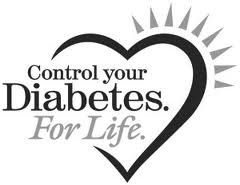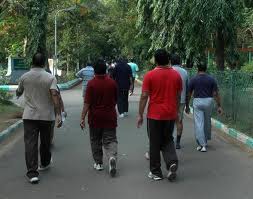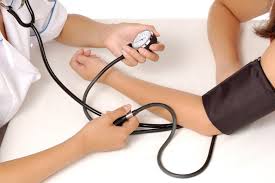HOW TO PREVENT AND CONTROL DIABETES
November 14, 2013 by admin
Filed under Tips for Ayurveda
 World Diabetes day is observed on November 14 of each year all over the world. It was introduced in 1991 by the International Diabetes Federation and World Health Organization in response to the alarming rise of diabetes all over the world.
World Diabetes day is observed on November 14 of each year all over the world. It was introduced in 1991 by the International Diabetes Federation and World Health Organization in response to the alarming rise of diabetes all over the world.
Each year, World Diabetes day is centred on a particular theme related to Diabetes. Earlier topics have included diabetes and human rights, diabetes and lifestyle, diabetes and obesity, diabetes in the disadvantaged and the vulnerable, diabetes in children and adolescents.
For 2009-2013 the theme chosen is Diabetes Education and Prevention.
Let us understand what is Diabetes – prevention and control methods.
Diabetes is called Prameha in Ayurveda. The description and details of the disease and its treatment can be found in Atharva Veda, which originated between 3000 BC to 1500 BC. More urine than the actual intake of water is mentioned as the simplest sign of diabetes in Ayurveda.
Symptoms associated:
Individuals can experience different signs and symptoms of diabetes, and sometimes there may be no signs. Some of the signs commonly experienced include: frequent urination, excessive thirst, increased hunger, weight loss, tiredness, lack of interest and concentration, a tingling sensation or numbness in the hands or feet, blurred vision, frequent infections and boils, slow-healing wounds, vomiting and stomach pain.
People who lead a luxurious life with less physical work are prone to diabetes more than others. People with huge personalities are having a higher chance of being diabetic. Diabetic comes with stress, imbalanced diet and lifestyle.
Diabetes often runs in families. If one of your parents has diabetes, your chances of getting it immediately become significantly higher. You need to approach this situation consciously and prevent from occurring.
Ayurvedic practitioners have a multi-pronged approach to diabetes. Ayurveda, too, recommends lifestyle remedies that include limit to food that are high in sugar and simple carbohydrates, eating smaller portions through the day, eating a variety of whole-grain foods, complex carbohydrates and vegetables every day, less fat and using less salt. It is also important to avoid smoking, reduce intake of alcohol, sleep adequately, check blood sugar levels periodically, check weight periodically and maintain ideal body weight.
Control measures:
In Ayurveda, the concept is that mind and body are interdependent and inseparable. So diabetic patients should always try to be calm and cool. The mind should be set in a free and easygoing manner. It is always better to keep cigarette smoking and alcohol at a distance. If a person is addicted to alcohol and is not in a position to avoid it, then consume only brandy, whisky and rum, and avoid beer and sweet wine. Diabetic persons should strictly avoid alcohol on an empty stomach.
Based on your medical practitioners input plan for medicine intake. Intake of medicine will have an effect only when supported by a balanced diet. According to the calorie content, food items can be classified in to five categories.
- Pulses (grains)
- Meat, fish, nuts, ghee and oils
- Milk and milk products
- Fruits
- Vegetables
Each category is similar to one another in the quantity of calories contained. You can include any category in the diet. But frequency of food consumption is to be arranged in such a manner by taking in to account the patient’s age, lifestyle and nature of work.
Care should be taken to avoid glucose, sugar, cake, pudding, chocolate and sweets, potatoes, tapioca and fried foods are also not good. Diabetic patients must try to control their weight in proportion to their height and age.
The appetite of a diabetic patient is high and they tend to become impatient and angry. Actually it is not appetite but thirst.
- Onions, tomatoes, cucumbers and carrots can be consumed in the form of soup or salad
- Consume fresh fruits like oranges and lemons. Avoid fruit juices.
- Include almonds in your daily schedule.
- Avoid dry fruits such as raisins(dry grapes), figs as fruit sugar is concentrated.
- Lemon tea, black coffee without sugar can be used
- Lemon juice without adding sugar , tender coconut water are suitable
- Avoid white flour.
- Include sprouted beans i.e moong gram and chick pea as these are proteins.
Exercise:
Daily exercise is necessary to manage diabetes. Yoga is beneficial. Ayurveda books refers reducing diabetic complaints by walking miles and miles without using foot wears. Walking is the least form of exercise prescribed. Walking distance is to be adjusted taking ones age and physical condition into consideration.
 Early morning and evenings are the most suitable times for walking. Diabetic person should walk regularly and be active. Ideally it is better to walk in groups as you will not skip the session due to laziness and secondly it is safe to be among a group. The walk should follow the schedule of low speed for first 5 minutes. A warm up basically. Slowly increase the speed and continue it for 30 minutes , then the last 10 minutes should again be in a relaxed mode. Keep your shoulders straight and hands free while walking. For those preferring an evening walk, leave a gap of 2 to 3 hrs after food intake.
Early morning and evenings are the most suitable times for walking. Diabetic person should walk regularly and be active. Ideally it is better to walk in groups as you will not skip the session due to laziness and secondly it is safe to be among a group. The walk should follow the schedule of low speed for first 5 minutes. A warm up basically. Slowly increase the speed and continue it for 30 minutes , then the last 10 minutes should again be in a relaxed mode. Keep your shoulders straight and hands free while walking. For those preferring an evening walk, leave a gap of 2 to 3 hrs after food intake.
To summarize, food and lifestyle, in addition to the prescribed medicine , can to a large extent control and cure diabetes.
Go thru’ this article on the Recommendations to prevent diabetes naturally. Let’s share this message of awareness to our friends too.
COMMON FOODS TO LOWER HIGH BLOOD PRESSURE
October 4, 2013 by admin
Filed under Tips for Ayurveda
 Hyper tension is also known as High Blood pressure. High Blood pressure(BP) can lead to Heart attacks, Strokes and paralysis of the body as it affects the brain too.
Hyper tension is also known as High Blood pressure. High Blood pressure(BP) can lead to Heart attacks, Strokes and paralysis of the body as it affects the brain too.
Most people with high blood pressure have no signs or symptoms, even if blood pressure readings reach dangerously high levels.
Although a few people with early-stage high blood pressure may have dull headaches, dizzy spells or a few more nosebleeds than normal, these signs and symptoms typically don’t occur until high blood pressure has reached a severe — even life-threatening — stage.
If you are diagnosed with hypertension i.e. a systolic/ diastolic pressure of 140/90 mmHg or above, then along with medications, you ought to make certain lifestyle changestoo, mainly – your diet.
Read this article Simple ways to include Ayurveda in everyday life
Risk factors:
High blood pressure has many risk factors, including: age, family history, being over weight or obese, not being physically active, using tobacco, too much salt in your diet, drinking too much alcohol, Stress and certain chronic heath ailments like high cholesterol, diabetes, kidney diseases and sleep disorders.
Complications:
Uncontrolled high blood pressure can lead to : Heart attack or stroke due to hardening and thickening of the arteries, Aneurysm due to weakening and bulging of blood vessels leading to rupture and blood loss, Heart failure, improper functioning of other critical organs. Affects brain functioning – ability to think, understand, remember and learn too.
How diet can lower High Blood pressure:
Diet is the first line of defense for prevention of hypertension and related diseases.
A healthy diet is one of the most powerful ways to lower blood pressure. Many commonly available foods can reduce your High blood pressure in as little as two weeks. Allocate adequate time for sleep, exercise and you can see the major difference.
1. Sprouts
Sprouts contain an antioxidant called glucoraphanin that has the ability to lower blood pressure and reduce the inflammation in the heart, arteries and kidneys. The effects of this antioxidant can also reduce the risk of stroke and heart attack. Be sure to eat fresh sprouts as they have the highest concentration of proteins, minerals, enzymes, antioxidants, anticarcinogens, vitamins and minerals.
2. Spinach
Spinach is a folate-rich food that can lower your risk of hypertension. This leafy green vegetable also provides a completely absorbable, balanced protein along with antioxidants that help lower blood pressure.
3. Bananas
Bananas have a high content of potassium, which is known to lower blood pressure and reduce the risk of stroke. Bananas are also low in sodium, which is important for people with high blood pressure to avoid. Just one banana a day can provide a dose of potassium, helping to reduce blood pressure and fend off various cardiovascular diseases. Along with bananas, you can also eat other fruits such as apples, plums, pears, pomegranate, and mangoes.
4. Garlic
Garlic has anti-inflammatory and antiviral properties that can fight coronary heart disease by unplugging arteries. The gas that garlic produces in the stomach relaxes your arteries and lowers blood pressure. Eating one garlic clove a day can significantly reduce your blood pressure in as little as three months.
5. Tomatoes
Tomatoes contain lycopene, an antioxidant that helps protect your cells from the damaging effects of free radicals. The lycopene and other carotenoids found in tomatoes help in reducing high blood pressure and lowering the risk of heart disease. Tomatoes also contain nutrients such as calcium, potassium, and vitamins A, C and E that are good for your overall health. Tomatoes can significantly lower both systolic and diastolic blood pressure among those who have hypertension.
6. Potatoes
Potatoes are rich in potassium and also contain a blood pressure-lowering compound called kukoamines. They also contain an assortment of minerals and vitamins, such as vitamins C, B6, B1 and B3; magnesium, iron, zinc and phosphorus; as well as carotenoids and natural phenols. All these minerals and vitamins are good for your overall health. For best results, be sure to prepare your potatoes without frying them and eat them without adding butter, margarine or sour cream.
7. Almonds
Nuts like almonds provide protein and healthy fats that are good for your health. The high amount of good protein in almonds and almond milk helps lower high blood pressure and fight against diabetes and cardiovascular disease. The monounsaturated fats in almonds have been found to lower cholesterol levels, reduce arterial inflammation, and ultimately lower blood pressure. The potassium present in almonds can reduce the negative effects of sodium on blood pressure. Healthy fats also promote cardiovascular health.
8. Olive Oil
Olive oil has free radical-fighting antioxidants known as polyphenols. Olive oil also is high in monounsaturated fatty acids like oleic acid, which helps prevent high blood pressure. However, it is essential to bear in mind that olive oil loses much of its health benefits when heated. Due to this, try to use olive oil without cooking it. You can drizzle it on a salad or stir it into a bowl of roasted potatoes to enjoy maximum benefits.
9. Celery
This crunchy green vegetable has a compound called 3-n-butyl phthalide that relaxes the smooth muscle lining in blood vessels, reducing blood pressure. Celery is also a good source of vitamins and minerals, including vitamin C, potassium, calcium and magnesium that help reduce blood pressure.
10. Salmon
The omega-3 fatty acids as well as EPA (eicosapentaenoic acid), primarily found in cold-water fish like salmon, reduce inflammation and prevent high blood pressure. Also, salmon has low fat and high protein content that is good for people with high blood pressure. You can also eat other cold-water fishes such as mackerel, halibut, anchovies, tuna, and herring. If you do not like the taste of fish, you can opt for fish oil supplements.
These common foods can help lower your blood pressure, in very little time for few individuals. In addition, limit your intake of sugar and saturated fats as they can increase inflammation and harden your arteries, which results in hypertension.
Prevention of High Blood pressure:
Lose weight, Exercise regularly, Cut down salt intake, Cut down coffee intake, Limit the amount of alcohol , Stop smoking
Foods to avoid: Papads and pickles, Canned and Processed foods, Frozen foods, etc.
Go ahead, Be happy, Live long and healthy….
TIPS FOR LONG BLACK HAIR
September 18, 2012 by admin
Filed under Tips for Ayurveda
 Since hair is protein (keratin), hence a diet that is too low in protein will lead to thinning of hair or retardation in the growth cycle. If you eat a protein-rich diet, it will often result in improved hair growth.
Since hair is protein (keratin), hence a diet that is too low in protein will lead to thinning of hair or retardation in the growth cycle. If you eat a protein-rich diet, it will often result in improved hair growth.
Some nutrition experts propose the consumption of calves liver, fish oil or protein, eggs, yeast, wheat and a daily dose of two tablespoons of granulated lecithin to increase hair length, hair growth, strength, and health of hairs.
Other high-quality food sources for protein include beans and yogurt. Soya bean protein has also been found to be helpful in increasing hair growth. In addition to making changes in the way of life. Take the following supplements every day to increase hair growth:
List of Vitamins that are useful to fast growth of hair.
- Vitamin B-complex one of the major B-vitamins (like B-12, B-6).
- Vitamin B-6 and Folic Acid.
- Vitamin C with bioflavonoid in citric fruits.
- Vitamin E found in fish and other sea foods.
Apart from vitamins – iron, calcium, Magnesium, sulphur, zinc, silica etc.
Mostly these irons and vitamins are found in fruits, dry fruits and green vegetables and oil like olive oil, coconut oil, butter etc. However, try to avoid excessive sugar in routine diet which harms your skin and health. Stress and pressure can play important role in hair loss. Improper sleep and bad food habits are also the cause of it.
Here are some natural tips of Hair care as given below.
- Massage your scalp using coconut oil, herbal natural oil, or almond oil, for at least 20 to 30 minutes on a proper manner. Massaging conditions the hair and prevents drying of hair. A good head massage help to increase blood circulation to scalp skin and aid hair growth. Head massage also reduces stress, tension headaches and induces good sleep.
- If you are using coconut oil then if possible, boil it for 2 minutes, then add vitamin E capsule in it, and then massage your scalp slowly and gently.
- Our body produces natural oil which is secreted through oil glands of skin and scalp. This oil keeps our hair strands conditioned. Hence do not use harsh shampoos or soaps which strip off natural oil of scalp. Always use mild shampoo to wash hair..Do not use low quality shampoos, conditioners or hair gel because they will damage your hair or may make them brittle and rough.
- Coconut is best nutrition for hair; try to include coconut in your regular diet like in dals, sabjis, and vegetables etc. Coconut milk is also good for hair growth.
- Make a paste of methi, lemon, and curd then massage that paste on the scalp. After 15 to 20 minutes shampoo your hair gently. It will definitely give a shine to your hair and is helpful for the hair growth. Do this once in 15 days regularly.
- Wash your hair with tea decoction. That increases the shine and length of hair. Wash your hair once in three days only. Repeated hair wash leads to dry hair and split ends.
- Never, ever scratch the clumps with your fingernails. It will cause wound on your scalp. It will also cause infection, as there are harmful bacteria often present underneath the nails. If you have dandruff problem then wash your hair with lemon or curd.
- Drink plenty of water (2 liters or 12 glasses per day). Water flushes out toxins and increases moistness of skin and hair. This prevents splitting of hair.
- Brush your hair from root to tips before taking head bath.
- Wear a swimming cap to prevent hair damage due to chlorine.
- Avoid tying hair tightly with hair bands. This leads to baldness.
- Eat a healthy Balanced diet. Include plenty of green vegetables, fresh fruits, minor millets, milk and milk products. Vegetables and fruits provide antioxidants and minerals which are necessary to keep the body healthy. Amla (amalaki or Indian gooseberry or emblica officinalis), is considered as a fruit which help in hair growth. Include banana in your diet as banana contains plenty of calcium which is a vital nutrient required for hair growth. Healthy diet prevents hair loss and improves quality and quantity of hair.
- Exercise regularly. This helps to increase blood circulation and keep our whole body healthy and rejuvenated. A brisk walk for 30 minutes is advisable for all ages.
Follow these tips for maintaining hair. This hair care system helps the hair tremendously and you will have many admirers your way. There are many hair care systems including the Indian Ayurvedic systems, which has a number of prescribed methods that have proven beneficial since centuries as Ayurveda is a very old medicinal system from India.







